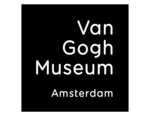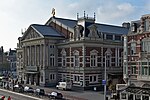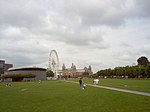Stedelijk Museum Amsterdam

The Stedelijk Museum Amsterdam (Dutch pronunciation: [ˈsteːdələk myˈzeːjʏm ˌɑmstərˈdɑm]; Municipal Museum Amsterdam), colloquially known as the Stedelijk, is a museum for modern art, contemporary art, and design located in Amsterdam, Netherlands.The 19th century building was designed by Adriaan Willem Weissman and the 21st century wing with the current entrance was designed by Benthem Crouwel Architects. It is located at the Museum Square in the borough Amsterdam South, where it is close to the Van Gogh Museum, the Rijksmuseum, and the Concertgebouw.The collection comprises modern and contemporary art and design from the early 20th century up to the 21st century. It features artists such as Vincent van Gogh, Wassily Kandinsky, Ernst Ludwig Kirchner, Marc Chagall, Henri Matisse, Jackson Pollock, Karel Appel, Andy Warhol, Willem de Kooning, Marlene Dumas, Lucio Fontana, and Gilbert & George.In 2015, the museum had an estimated 675,000 visitors.
Excerpt from the Wikipedia article Stedelijk Museum Amsterdam (License: CC BY-SA 3.0, Authors, Images).Stedelijk Museum Amsterdam
Museum Square, Amsterdam
Geographical coordinates (GPS) Address Phone number Website External links Nearby Places Show on map
Geographical coordinates (GPS)
| Latitude | Longitude |
|---|---|
| N 52.358056 ° | E 4.879722 ° |
Address
Stedelijk Museum Amsterdam
Museum Square 10
1071 DJ Amsterdam
North Holland, Netherlands
Open on Google Maps










